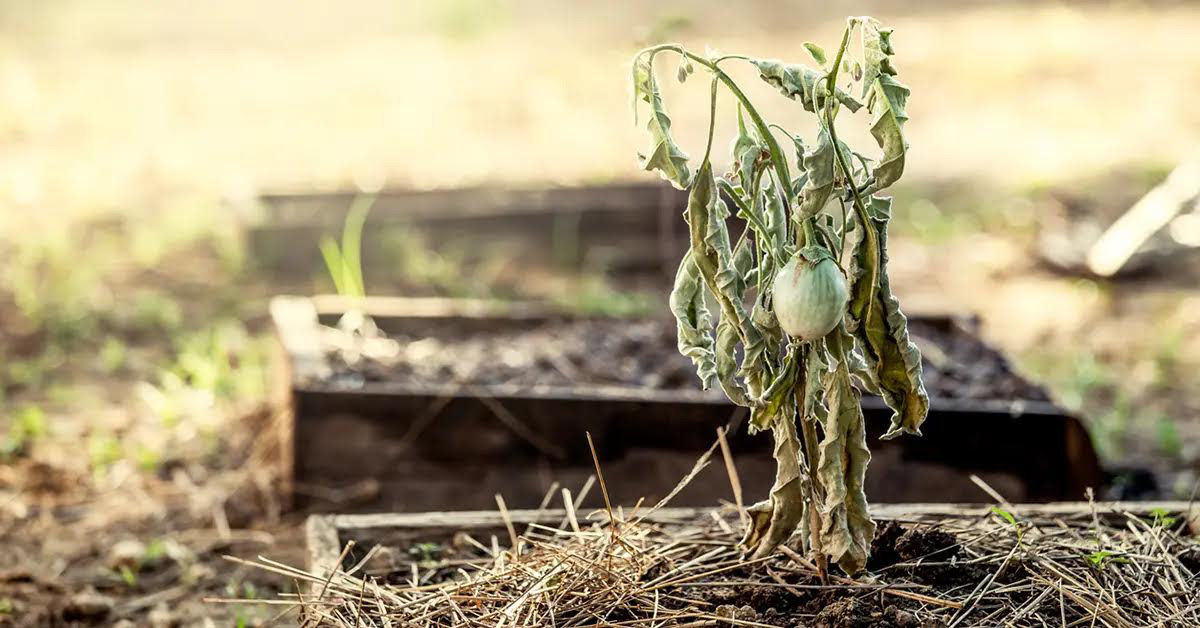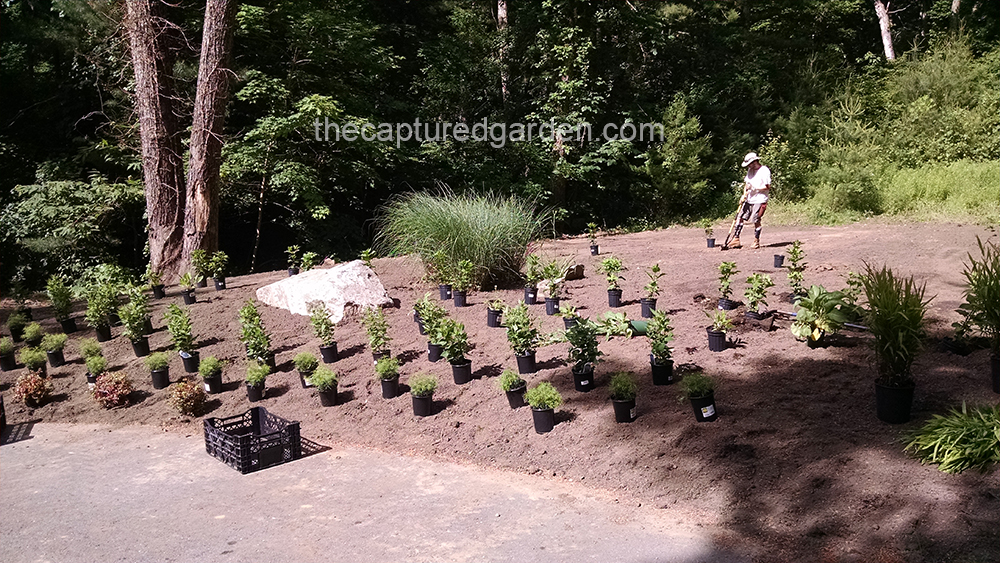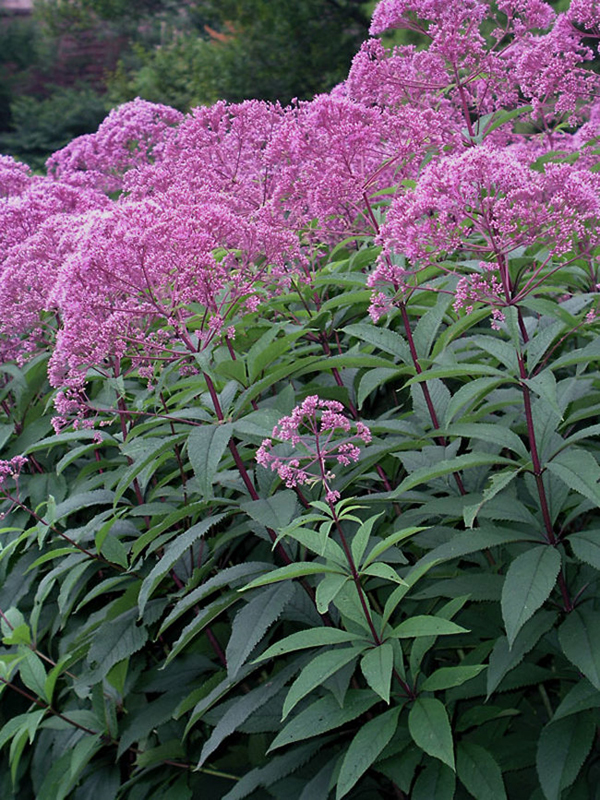H2Ohhhhh
In New England this has been a ridiculously hot, dry summer. It goes without saying that the need for water is greater than it has ever been. Not only for you as you are working in your garden but also for your plants. I have a client who went away for the summer. Unfortunately, he didn’t think that the garden would need water. This is a new garden and although I planted drought-tolerant plants I explained that especially the first year the plants would need regular water. Sadly he did not hear me and a recent garden check left me heartbroken. So many beautiful plants barely holding on. The soil was dry as dust.

Please make sure that your gardens and containers are getting ample water. Don’t think that any occasional rain lessens your responsibility. Often if the rain is heavy it rolls right off the surface and into the storm drain. If you are fortunate to have an irrigation system, make sure it is working correctly. A brown spot on the lawn or an area of the garden that is not looking great could be an indication of a problem. Since many systems run very early in the morning you might not always spot a problem with one of the sprinkler heads.
Speaking of early morning, it is the best time to water. Water can sink in without evaporating as it would in the heat of the day. Watering late in the evening is not good as moisture will stay on leaves and blades and can cause mildew or fungus. And hand watering is rarely a good idea. Unless you plan to stand and water for hours that is. A better idea is to set up a sprinkler and leave it for a few hours. You can always dig into the soil to see how deeply the water has penetrated. Soaker hoses are also a good idea and will deliver water right to the root zone.
Most gardens need about 1” of rain per week; a good rain gauge can determine if you need to water.
Happiness is just two feet away.

Among all the great questions – “why are we here?” “is there life on other planets?” “what happens after we die?” I believe there is another we have yet to ask – “why did we stop skipping?”
The other day as I was out running errands I stopped at a light and, because it was a long light, I had time to look around, or “observate”, as my brother often teases. There were the young moms clutching their coffees, the store window signs that heralded “We’re open”, the teenagers in the Jeep next to me with the music too loud. I was just about to give them the evil eye because they were texting when something caught my eye. Two young boys, ice cream cones in hand, were skipping down the sidewalk. Skipping. As in see how high you can get your knees up, laugh -out-loud skipping. I watched as their father tried to keep up and started giggling. Didn’t he know that walking, even fast walking, can never trump skipping. Skipping is so much faster and more fun. And then I remembered when I used to skip. At first it was difficult and required me to really practice and pay attention. Kind of like when I try and do “the floss” dance move!
For some reason over time we have stopped skipping but I wonder what would happen if we started back again. I dare you to try and skip without smiling; it can’t be done. And for better or worse I bet when people see you skipping, they will smile. We have so many things to bring us down and as a result many of us move about in a depressed Eeyore-like shuffle that is worse than a teenager on the first day of school. To lighten our mood, we don’t need more drugs, we don’t need more time at the gym, we don’t need anything else that promises to make us happy. I think what we really need is just two feet away.
Mid-Century pollinator pad

One of our latest projects involved turning a messy, weedy area at the base of our client’s steep driveway into a contemporary pollinator garden. The style of the house is mid-century modern, so we kept our design very linear and planted in rows of material. We started with a tall Joe Pye weed (eupatorium maculatum) and fronted that with wild quinine (parthenium integrifolium). Next came a row of agastache and then in front coreopsis. Finally, we planted sedum ‘Fuldagut’ and allowed it to wander down the slope a bit.
Planting in blocks is best for pollinators since it makes plants easier to see and also helps them to conserve energy while foraging. A planting like this is also conserving energy for the homeowner since all these plants are low maintenance and, once established, will do well in hot, dry conditions. By designing with perennials, which die to the ground in winter, we will minimize any damage that could be done by the snowplow as it comes down the drive.
I am excited by the potential this garden has to help all kinds of pollinators. Before we had even started digging, while we were arranging plants, a few butterflies came by. That’s always a good sign!
Eeeewwwwwww.

As slimy as slugs are there are some pretty cool facts about them you might not know. Read on to ensure an exciting conversation at the dinner table tonight!
-
One slug can have up to 90,000 grandchildren. (You want to knock Grandma and Grandpa out fast so get that slug deterrent down early. Now is a good time as hosta shoots are starting to poke out.)
-
A slug’s blood is green!
-
Slugs can live for up to 6 years.
-
A slug has 27,000 teeth – more than a shark!
-
Only 5% of slugs are above ground at any one time, meaning there are a lot more we DON’T see.
For more on slugs, as well as ways to prevent them and other pests, schedule my presentation, “Tips, Tricks and Trade Secrets.”
Your roots are showing.

Root washing is turning the traditional way of planting trees and shrubs on its head. The procedure involves taking a tree or shrub, either container grown or B&B, and gently washing the soil from the roots. Why? Removal of soil allows the roots to be clearly seen. As a result any girdling, or circling roots can be removed. Girdling roots happen when material is grown in a container or B&B for too long. Roots cannot grow outward so they begin to circle. Because of “root memory” they continue to do so even when transplanted. Girdling roots can end up strangling a tree. Removal of girdling roots will give any new transplant a better start. Trunk, or root, flare (which is where the first main roots attach to the trunk) is also more easily seen when soil is removed by root washing. Since many trees die because they are planted too deeply identifying the flare is crucial to success. Additionally by removing the medium around the root ball you allow the roots to adjust to their new home immediately without having to travel across the “interface” zone. This is the area between the root ball soil, which is typically clay, and the backfill soil. Roots do not easily pass from one type to the other.
This all seems to make sense to me and I confess I have always removed burlap when planting trees despite being told I shouldn’t.


Follow Us!